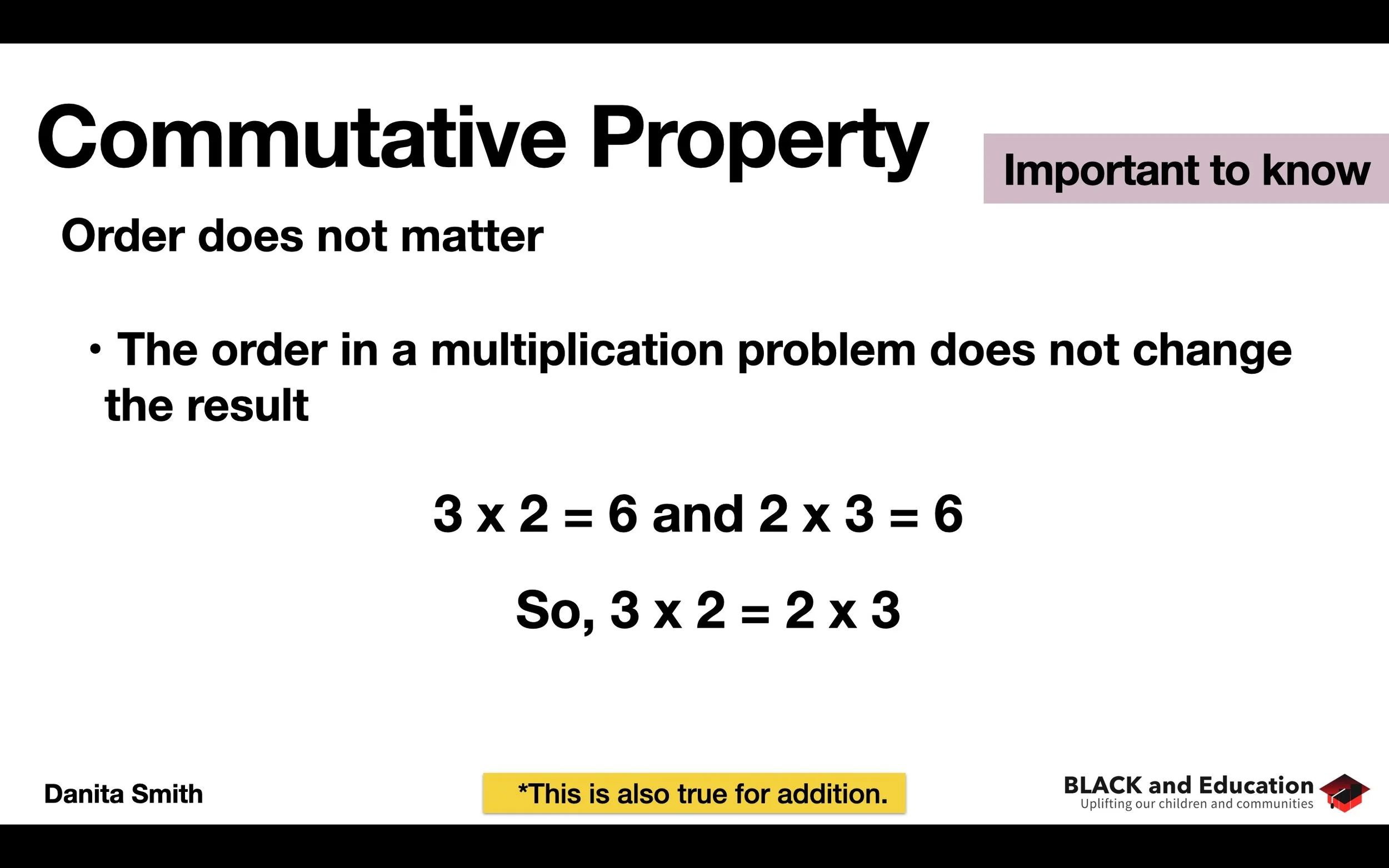Properties of Multiplication
There are certain properties of multiplication problems that will help you later on in algebra and beyond, as you start to manipulate more complex problems.
Associative Property
The way you group factors, in a multiplication problem, doesn’t change the result.
So, 4 x (3 x 5) is the same as (4 x 3) x 5, which is also the same as (5 x 4) x 3.
Commutative Property
Similarly, the order of the factors in a multiplication problem doesn’t change the result.
For example, 3 x 2 is the same as 2 x 3…they both equal 6. This is going to be very useful to you when you get to algebra.
Distributive Property
Another very useful property of multiplication is the distributive property. A multiplication problem can be broken up such that one of its factors can be placed in the form of an addition problem, and the other factor can be distributed to each part to figure out the answer.
This can be helpful when you have large or complex numbers to multiply—you can break them up with this property.
For example, if I wanted to fine out what 20 x 110 is, I could:
20 x 110
20 (100 + 10)
(20 x 100) + (20 x 10)
2000 + 200 = 2,200
You will be asked to do this a million times throughout high school (I am over exaggerating, but you will be asked to use the distributive property a lot in college and high school).
Summary
The way you group factors in a multiplication problem does not change the answer.
The way you order the factors in a multiplication problem does not change the answer.
A multiplication problem can have one of its factors broken up into an addition problem, while the other factor can be distributed to each part…this will not change the answer as well, but can help you breakdown more complex problems.



